HOME www.tegels-uit-rotterdam.com
Tiles with figures on horseback from Rotterdam and Utrecht in Tredegar House, Wales
in: Glazed expressions
The Magazine of TACS, the Tiles and ArchitecturalCeramics Society
Issue No. 47 Summer 2003
TREDEGAR HOUSE near Newport in South Wales is the ancestral home of the Morgan family. The history of the house goes back to the late fifteenth Century, but much of what can be seen today was built by William Morgan between 1664 and 1672. Dutch tiles are found in the fireplaces throughout the house but of particular interest are the tiles showing figures on horseback in a fireplace in the Best Chamber and in a fireplace in the Side Hall.
BEST CHAMBER
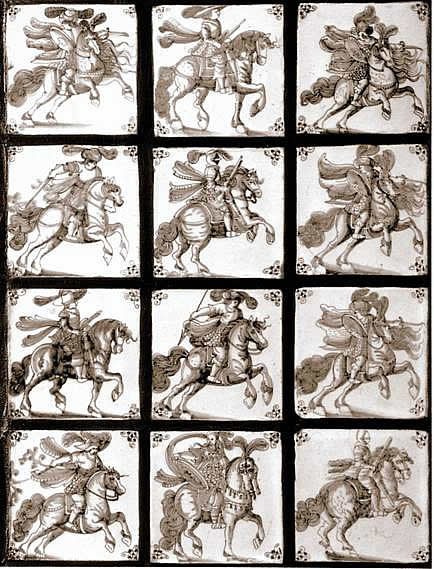 fig. 1
fig. 1
Eighteenth century tiles from Rotterdam painted in purple in the fireplace. Some of the figures on horseback have been copied from prints made by the Italian artist Antonio Tempesta
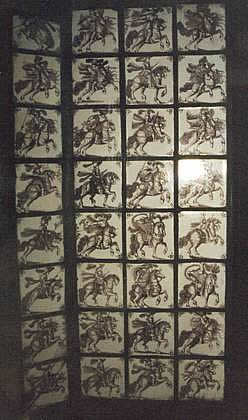
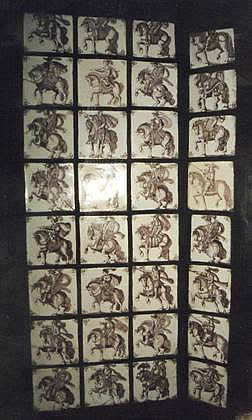
fig. 2 fig. 3
The Best Chamber was designed as a bedroom intended only for the use of distinguished guests. The fireplace in the Best Chamber has 64 tiles arranged in two groups of 32 tiles on either side of the grate (8 tiles high and 4 wide) in such a way that all the figures on horseback face inwards towards the grate. The tiles, dating from the eighteenth century, have a standard size of 13.2 x 13.2 cm and are painted in purple.
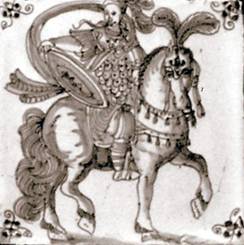 fig. 4
fig. 4
One of the Dutch tiles in the Best Room showing Campaspé on horseback
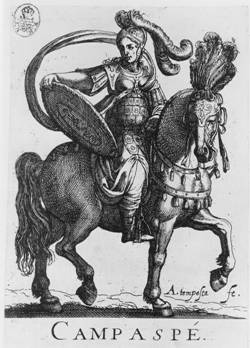 fig. 5
fig. 5
Early sixteenth century Italian copperplate engraving signed A.tempesta fe. (Antonio Tempesta, fecit) with a representation of Campaspé on horseback, which served as an example for the Dutch tile illustrated (Courtesy Kupferstichkabinett, Dresden, Germany)
It has been possible to trace back sixteen of the designs to engravings made by the Italian artist Antonio Tempesta (1555-1630) and what this revealed was that the figures on horseback did not only represent famous men from history like Alexander the Great and Julius Caesar but also legendary women like the Trojan prophetess Cassandra, Campaspé and the high born Roman woman Cornelia, wife of Tiberius Sepronius Gracchus.
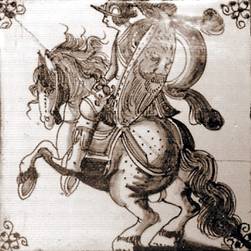 fig. 6
fig. 6
One of the Dutch tiles in the Best Room showing Cyrus Mayor on horseback
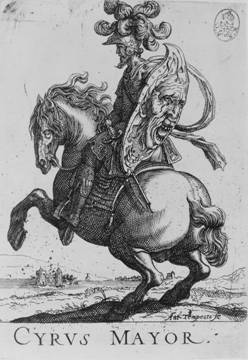 fig. 7
fig. 7
Early sixteenth century Italian copperplate engraving signed A.tempesta fe. (Antonio Tempesta, fecit) with a representation of Cyrus Mayor on horseback, which served as an example for the Dutch tile illustrated (Courtesy Kupferstichkabinett, Dresden, Germany)
These particular designs with figures on horseback continued to be used by Dutch tile makers until the end of the nineteenth Century. An example with the Roman noblewoman Cornelia on horseback appears in the Thomas Elsley catalogue (London) of circa 1890 as part of a range of tiles imported from Holland.
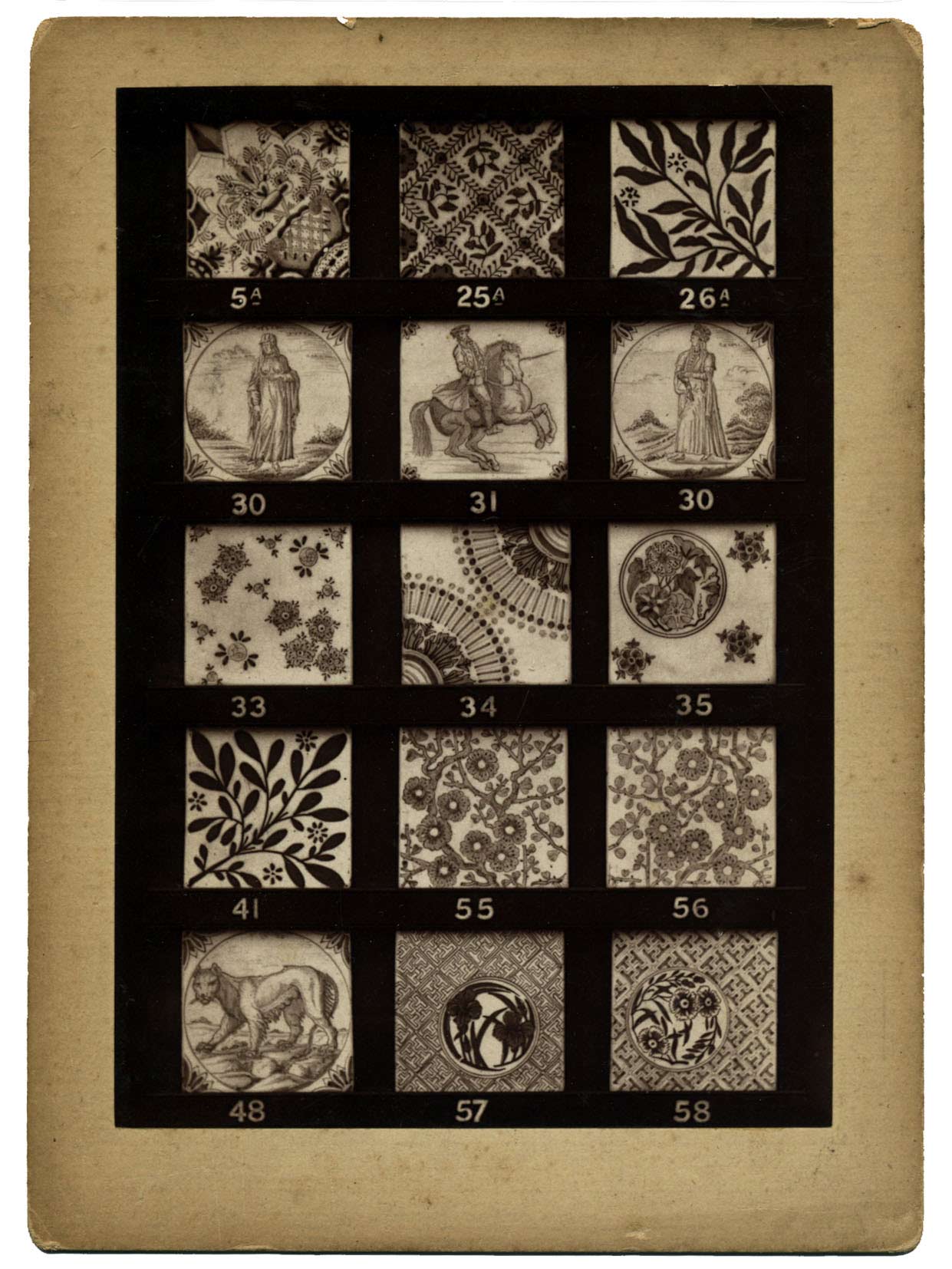
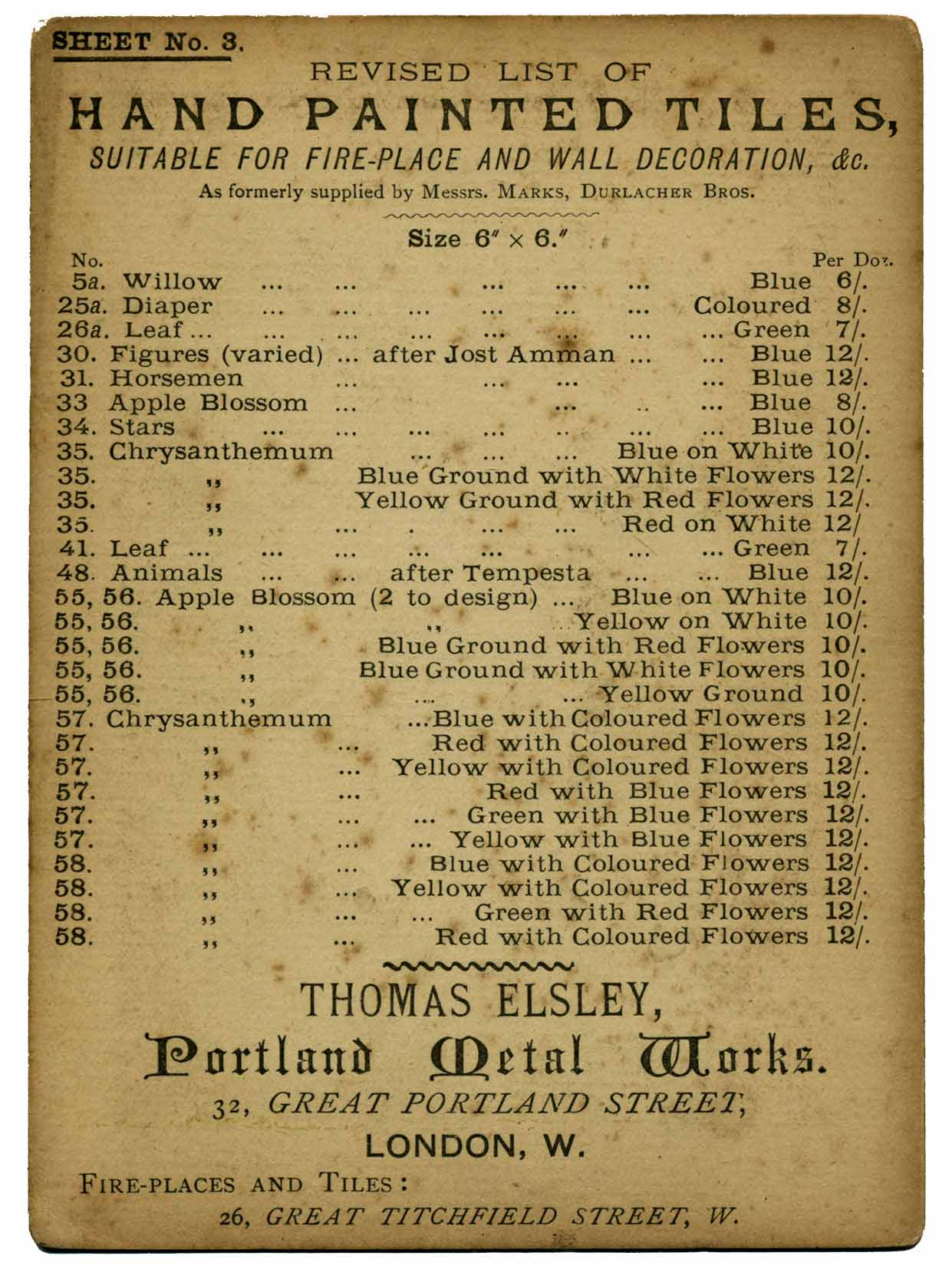
SIDE HALL
In the Side Hall remodelled as an entrance hall in the 1860s, the tiles with figures on horseback in the fireplace show scenes from an eighteenth century riding school where horses were trained in deportment and response to controls. They measure 15 x 15 cm, are painted in blue, and like the other tiles in the Best Room total 64 in number arranged in two groups of 32 tiles on either side of the grate with all the riders facing inwards. They were made by the Utrecht manufacturer Ravesteijn during the second half of the nineteenth century and an example from this set can again be found in the Thomas Elsley catalogue of circa 1890.
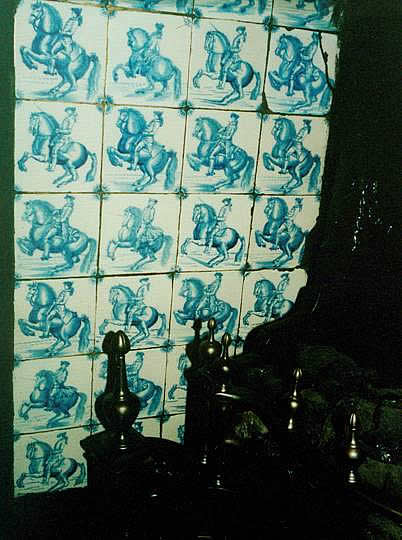 fig. 8
fig. 8
Fireplace in the Side Hall of Tredegar House with Dutch tiles depicting scenes from an eighteenth century riding school. The tiles were made by the firm Ravesteijn in Utrecht in the second half of the nineteenth century.
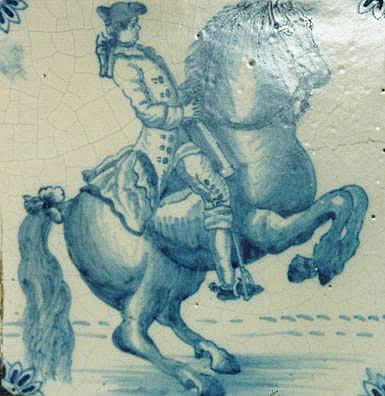 fig. 9
fig. 9
One of the Dutch tiles in the Side Hall
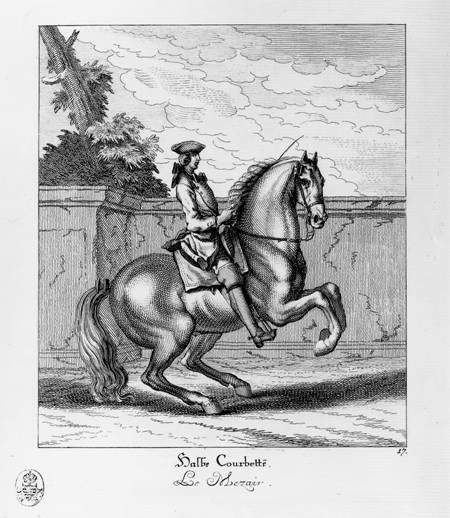 fig. 10
fig. 10
Eighteenth Century German copperplate engraving by J.E. Ridinger based on a painting by E.M. Steinberger from a series of prints showing scenes of horses being exercised in a riding school. This print served as an example for the Dutch tile illustrated in fig. 9 (Courtesy Kupferstichkabinett, Dresden, Germany)
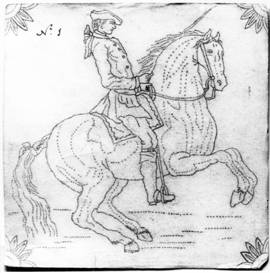
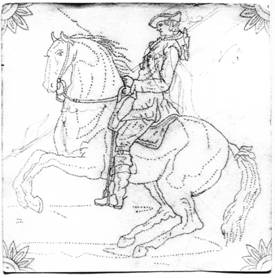
fig. 11 fig. 12
Late nineteenth century pinpricked designs from the Ravesteijn tilefactory in Utrecht, based on the copperplate engraving by J.E. Ridinger illustrated in fig. 9 through the pinholes, which would leave a faint impression of the picture on the unfired white tin glaze as guide for the painter.
The pinpricked designs (sponsen) for these tiles used by the firm Ravesteijn in the production of the tiles have been preserved and are now in the Rijksarchief (State Archive) in Leeuwarden, Holland. The engravings on which the designs of these tiles are based were made by Johann Elias Ridinger (1698-1764) and can be found in the Kupferstich-Kabinett, Staatliche Kunstsammlungen in Dresden, Germany, and are copies of paintings by Leonard Michael Steinberger (circa 1713-1772). These designs therefore made a long journey first from a painting to an engraving and then from an engraving to a pinpricked design which was then finally applied to a tile.
Acknowledgements: I would like to thank Laura Beresford, Chris Blanchett, Dr. Christian Dittrich, Richard & Hilary Myers, Hans van Lemmen and Jan Pluis for providing information and photographs for this article.
With the permission of Mr. Hans van Lemmen and the Tiles & Architectural Ceramics Society
www.tilesoc.org.uk
Tredegar House, Wales
http://en.wikipedia.org/wiki/Tredegar_House